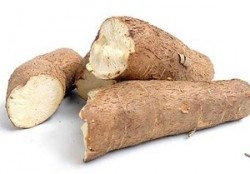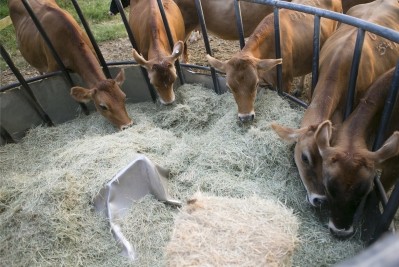Researchers look to urea to improve nutritional value of cassava for poultry

Qatar Fertilizer Company (Qafco) and Belgium’s University of Liege, this week, finalized a deal to team up on a research program to investigate the effectiveness of using urea to bolster the nutrient capacities of cassava root.
Khalifa Abdulla al-Sowaidi, CEO of leading urea supplier, Qafco, said the initiative was in line with that company’s policy of increasing its collaborative efforts with universities and scientific research institutions.
Urea has a Generally Recognized as Safe (GRAS) status in the US. It is also approved by the European Food Safety Authority (EFSA) for use in ruminants and is used as cost effective replacement for a part of the protein in a cattle feed ration when soybean prices are high.
A non-protein nitrogen (NPN) compound, it is converted into proteins by the bacteria in the rumen of cows.
NPNs challenges for pigs and chickens
However, it is said that monogastrics like pigs and chickens cannot make use of large concentrations of NPN compounds because of a lack of enzymes and bacteria to break down the NPN to ammonia and synthesize it into protein.
But Professor Pascal Leory, dean of the faculty of veterinary medicine at Liege University, told feednavigator that the university researchers in tandem with the Qafco team will be relying on a bacterial fermentation process to convert urea into a protein that can be fed to poultry.
However, he would not reveal anything further, citing "confidentiality reasons" when pressed for additional details on the technology involved.
Research duration
The research initiative is set to last three years and will include “several phases to certify the results,” added the professor.
Leory said the university is only interested in the research end and not the profit potential of the collaboration. Any products arising out of the initiative will be commercialized by Qafco, he said.
With an annual production capacity of 3.8 million metric tons (MT) of ammonia and 5.6 million MT of urea, Qafco is now the world's largest single-site producer of ammonia and urea.
It makes Qatar the world's fourth largest urea producer, with about 15% share of the world urea supply.
Cassava’s feedstock potential
In February this year, this publication reported on a meeting of research institutes that the International Institute of Tropical Agriculture (IITA) convened to create a roadmap for jumpstarting the cassava business in Africa given its potential for use in livestock feed.
As the second most important food crop in the least developed countries and the fourth most important source of food energy in the world after wheat, maize, and rice, cassava is generally grown by small holder farmers largely because of its tolerance of drought and poor soil.
Both the roots and peels can be directly fed to livestock or used in producing commercial feed, resulting in additional income for farmers and fish producers. According to the Food and Agriculture Organization (FAO), “animals raised on cassava have generally good health, good disease resistance, and a low mortality, and require few, if any, antibiotics in their feed.”
Nigeria's pioneering work
Nigeria, the world’s top cassava producer, is transforming its cassava sector and strengthening the value chain of the root crop to make it more competitive. Annual cassava production in Nigeria climbed to 52.4 million tons in 2011, also generating 5 to 7.5 million tons of wet peels (10 to 15% of whole tuber), as farmers and industry rev up processing.
Reforms in cassava-growing countries in Africa, backed by supportive government policies and improved varieties developed by agricultural research centers have significantly raised the tuber’s productivity as well.
“When the cassava transformation agenda of Nigeria is completed, the production of cassava by-products (peels) is expected to reach 2 million tons of dry matter per year,” said Dr Claude Fauquet, director of GCP21. “This is the perfect time to set up a feed manufacturing system on an industrial scale.”















